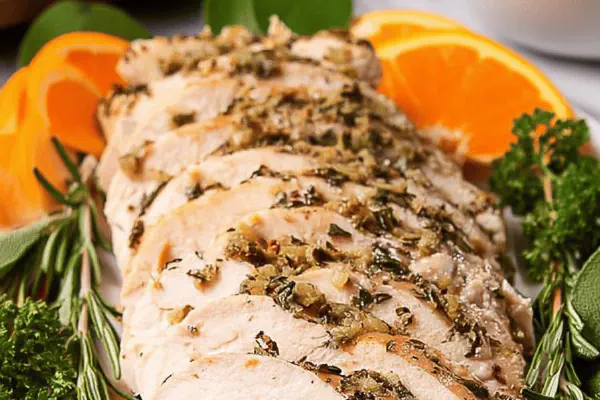Featured Recipe
Herb Citrus Brined Pork Chops

By Kate
"
Pork chops soaked in a citrus-herb brine to boost juiciness and flavor without sogginess. Classic salt-sugar base shifted with tamari soy sauce and fresh lime slices for a twist. Bay leaves swapped out for star anise for subtle complexity. Brining time shortened slightly to avoid rubbery texture while still tenderizing. Browned in olive oil with herb butter made from tarragon, thyme, and chives. Visual browning cues and aroma guides help hit that elusive perfect sear and internal doneness. Practical tips for brine sub-ins, managing pork thickness, and resting chops ensure reliable results every time.
"
Prep:
20 min
Cook:
12 min
Total:
32 min
Serves:
6 servings
pork
brining
herbs
cooking techniques
Introduction
Salted water soaking. A trick to punch up texture and moisture. But brining is cheaty if done wrong—too salty, rubbery like gym shoes, or just lifeless. The secret? Controlled salt and sugar balance, aromatics that don’t overpower but add intrigue, and careful timing. Switch out lemon for lime, bay for star anise for subtle citrus-licorice notes. Tamari soy sauce, low-sodium but powerful umami boost, replaces some salt to avoid over-salting and deepen flavor. Chops benefit from quick brine 5-11 hours. Long enough to draw in moisture, not so long that proteins denature excessively and ruin texture. Step two: crisp sear, brown edges like mahogany wood. Herb butter finish, essential for fat richness. Keep eyes, nose, and touch dialed in. Smell the garlic and herbs blossoming in brine. Sizzle rhythms in pan tell when to flip. Chuck the thermometer if you want but watch texture, fluids, color. Crackling olive oil hits chops; golden crust sings. Resting folds juices back inside. Top with melty herb butter, and you’re done.
Ingredients
About the ingredients
Kosher salt is preferred for predictable salting and bigger crystals that dissolve steadily. If using table salt, reduce by about half due to finer grain. Tamari soy sauce must be added sparingly; it adds color and umami but also salt, so reduce salt proportionally. Star anise offers a subtle licorice aroma, but if unavailable, substitute with a couple of crushed allspice berries or stick with bay leaves for a milder flavor. Lime slices give a sharper citrus brightness compared to lemon; can swap with orange for sweetness or grapefruit for bitterness. Fresh herbs like rosemary and thyme anchor the brine; dry can be used but fresh provides stronger flavors. Butter for finishing must be softened to easily mix with herbs and melt evenly over hot chops. Olive oil for searing best when it shimmers but doesn’t smoke—medium heat is key to avoid burning herbs or meat.
Method
To Brine Pork Chops
- Start with water, tamari soy sauce, salt, sugar in a large stockpot or Dutch oven. Toss in star anise pods, smashed garlic, peppercorns, rosemary, thyme, and lime slices.
- Over medium heat, warm up until just starting to simmer, stir constantly to dissolve salt and sugar completely. No boiling, just enough to extract aroma. Remove pot from heat and let cool fully to room temp or cooler. Brine must be cold before adding meat or risk partial cooking and uneven texture.
- Submerge pork chops fully in cooled brine. Use extra cold water if chops don’t fit or float. Partial submersion ruins brining effect. Refrigerate uncovered or loosely covered for 5 to 11 hours max. One hour less than usual to avoid meat turning rubbery, common mistake is letting chops soak overnight.
- Take chops out, rinse under cold water to remove excess salt and herbs clinging to surface. Pat dry with paper towels. Brine discard. Don’t reuse; it’s contaminated with raw pork juice.
Technique Tips
Brining is a game of chemistry and timing. Heating the brine slightly helps dissolve salt/sugar and releases herb oils but boiling ruins temper and can cook the meat preemptively if hot brine is added. Always cool fully before adding meat. Submerging chops fully ensures even flavor and moisture uptake; water top-off is a lifesaver for tight pots. Brine only 5-11 hours—too short and it’s pointless; too long and muscle fibers break down too much and get rubbery or mealy. Rinse brined meat to remove surface saltiness and herbs to prevent burning in pan. When searing, wait for visual cues—edges browning, juices rising, surface mattifying—rather than clock watching. A good sear traps juices inside and starts Maillard reaction for flavor complexity. Resting folds juices back into fiber; skip this and you lose half the moisture when cutting. Herb butter adding post-cook acts like a finishing glaze; herbs release aroma when melting and enrich mouthfeel.
Chef's Notes
- 💡 Always adjust brining time for pork thickness. Thinner chops need less time; over-brining can ruin texture. Squeeze in citrus; enhance. If star anise isn’t available, use allspice berries.
- 💡 Have a backup brine ready in case of last minute changes. Too salty? Rinse longer. Not enough time to brine? Salt rub instead. Remember: monitor water temp; hot brine ruins protein.
- 💡 Searing is about timing. Wait for visual cues. Edges should turn a deep golden brown. Juices bubbling on the surface signal readiness to flip. Don't rush; waiting makes for better flavor.
- 💡 Resting chops is vital. Skip it at your own risk. Juices need time to redistribute. If you cut too soon, lose moisture. Foil loosely covers without trapping steam.
- 💡 Consider using flavored olive oil for searing. It can add layers without overpowering. Lightly coat pan, shimmer, but avoid smoke. Add garlic soon after; aroma intensifies.
Kitchen Wisdom
How long to brine pork?
5-11 hours max. Too short, no benefit. Too long, texture suffers. Check thickness; adjust timing accordingly.
What if I don’t have tamari?
Regular soy sauce works fine. Adjust salt slightly. Not too salty—balance flavors. Low-sodium option exists too.
Best way to store leftovers?
Wrap tightly or in airtight container. Refrigerate for 3-4 days. Reheat gently on low heat; don't dry out.
Can I use other meats?
Absolutely—chicken thighs, whole turkey, or even veggies. Adjust brining time; chicken shorter, veggies even shorter.



